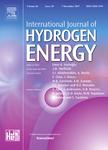版权所有:内蒙古大学图书馆 技术提供:维普资讯• 智图
内蒙古自治区呼和浩特市赛罕区大学西街235号 邮编: 010021

作者机构: Grantham-Allee 20 Sankt Augustin53757 Germany Fraunhofer Institute for Algorithms and Scientific Computing SCAI Schloss Birlinghoven Sankt Augustin53757 Germany
出 版 物:《International Journal of Hydrogen Energy》 (Int J Hydrogen Energy)
年 卷 期:2025年第144卷
页 面:1299-1313页
核心收录:
学科分类:0820[工学-石油与天然气工程] 0830[工学-环境科学与工程(可授工学、理学、农学学位)] 1201[管理学-管理科学与工程(可授管理学、工学学位)] 080703[工学-动力机械及工程] 0817[工学-化学工程与技术] 08[工学] 0807[工学-动力工程及工程热物理] 081404[工学-供热、供燃气、通风及空调工程] 0814[工学-土木工程]
基 金:This work was supported by the German Federal Ministry for Education and Research [Hydrogen Flagship Project TransHyDE_FP1 MechaMod grant number 03HY201N ]. The authors would like to thank the anonymous reviewers for their valuable suggestions
摘 要:In 2020, around 44% of natural gas in Germany was used in combined heat and power as well as in combined cycle gas turbines plants. As district heating will play an important role in future heating planning, the retrofit of these plants to hydrogen is a viable option. This paper analyzes a typical combined cycle power plant, including its balance of plant under consideration of different hydrogen blends. We show that retrofits are limited by the gas turbines in many cases. For instance, the preheater in the fuel gas system must be dimensioned higher than with natural gas. While pressure losses are very low, materials could be a problem due to higher volume flows. Additionally, the higher combustion temperatures in the gas turbine can compensate for possible efficiency losses in the Heat Recovery System Generator (HRSG) and steam turbine making this a suitable approach for electricity-led plants. However, for heat-led plants this leads to a reduction in the district heating output. Therefore, the performance of the HRSG must be considered as a limiting factor for heat-driven plants and the change in flue gas must be analyzed. Currently, hydrogen blends of 20–40 vol.-% appear feasible without major adjustments. The water content in the exhaust gas can also lead to problems in the HRSG and flue gas aftertreatment due to changes in the dew point. For higher hydrogen blends, a plant specific analysis is recommended. © 2025 The Authors